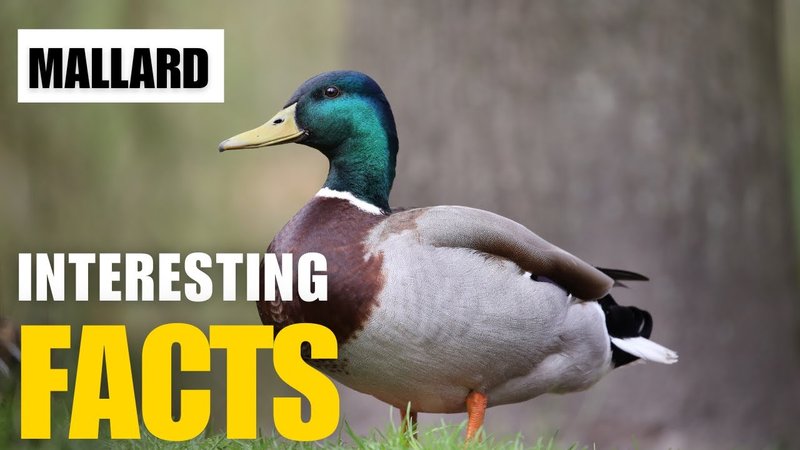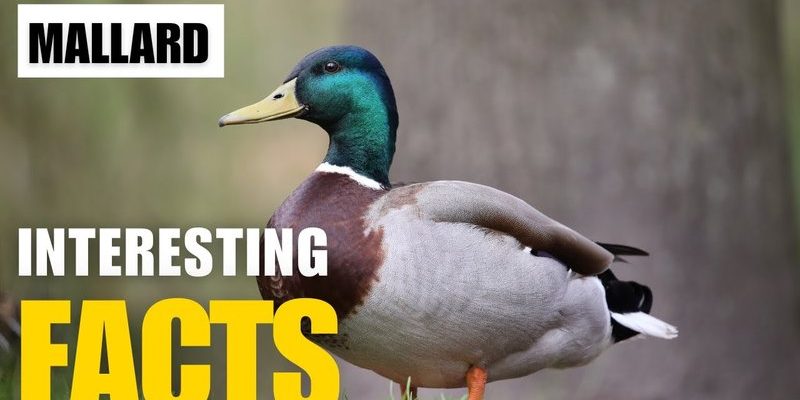
Imagine you’re having a cup of coffee with a friend, and you start chatting about birds. You might say, “Did you know that mallards aren’t just pretty faces? They have unique traits that make them stand out!” Seeing these ducks in parks or ponds can spark curiosity about their lives and habits. So, let’s explore the world of the mallard, where we’ll unpack cool facts that reveal why they’re so special.
1. Distinctive Physical Features
The mallard is easily recognizable thanks to its striking appearance. The males, usually called drakes, boast a vibrant green head that shimmers in the sunlight. You might think of it as nature’s way of showing off. Their bodies are a mix of gray and brown, and they have a distinctive blue patch on their wings, bordered by white. Females, on the other hand, are more muted in color, sporting a lovely mottled brown to help them blend in with their surroundings—think of them as the stealthy ninjas of the duck world.
These physical traits aren’t just for show. The bright colors of the drake attract females during mating season, while the female’s camouflage helps protect her and her ducklings from predators. So, when you’re out at a pond and see a mallard, appreciate how evolution has shaped these beautiful birds!
2. Habitat and Distribution
Mallards are incredibly adaptable birds. They can be found almost everywhere in the world, except for Antarctica. Their habitat ranges from parks to wetlands, rivers, and lakes. You might be wondering why they get around so much. Well, it’s because they thrive in diverse environments that provide the food, shelter, and nesting sites they need.
One reason for their widespread presence is their migratory nature. During winter, mallards often fly south to warmer climates. This journey can span thousands of miles! Imagine flying all that way just to avoid the cold. In the spring, they return to their breeding grounds, showcasing their amazing homing instinct.
3. The Quack We All Know
You’ve probably heard the classic quack of a duck, and mallards are no exception. Their quack is actually a communication tool, especially for females. They use it to call their ducklings or to signal to other ducks. Interestingly, the quack isn’t just a random sound; it varies depending on the situation. For instance, a mother duck’s quack might sound different when she’s calling her babies compared to when she’s alerting others of danger.
Here’s the thing: some say that a duck’s quack doesn’t echo, but that’s a myth! Every sound they make, including their quack, can echo just like any other noise. So, if you’re near a pond and hear a mallard quack, just remember it’s more than just noise; it’s their way of expressing themselves.
4. Diet and Feeding Habits
Mallards are omnivorous, which means they eat both plants and animals. Their diet typically consists of aquatic plants, seeds, insects, and even small fish. Watching them feed is quite a sight! They often dabble, which means they tip forward in the water to reach food. It’s like a little underwater gymnastics routine.
They’re also known for their ability to forage on land, scavenging for grains or leftovers from picnics. If you’ve ever tossed bread to ducks, you probably fed a few mallards! However, it’s best to stick to healthier options like lettuce or corn if you feel the urge to treat them.
5. Social Behavior and Mating Rituals
Mallards are social birds and often gather in groups called rafts or flocks. You might spot them forming these groups in parks or lakes during the migration seasons. Their social behavior extends to mating as well. Males perform elaborate courtship displays to woo females, showcasing their colorful feathers and performing head bobbing and tail wagging. It’s like a dance-off, but in the bird world!
Once paired, mallards have a strong bond. They often stick together to raise their ducklings. This commitment is a beautiful aspect of their social structure, highlighting how cooperation can help in raising the next generation.
6. Nesting and Raising Ducklings
Nesting is a crucial part of a mallard’s life cycle. Female mallards typically look for a safe, hidden location to lay their eggs—often in tall grass or reeds near water. They usually lay about 8 to 12 eggs, which she incubates for about 28 days.
The moment those ducklings hatch, it’s an adorable sight! They are precocial, meaning they can walk and swim almost immediately. It’s like they come into the world ready to dive into life. This quick independence is crucial for survival, as the mother must protect them from predators right away.
7. Mallards in Culture and Folklore
Throughout history, mallards have made their mark in culture and folklore. They are often depicted in art, literature, and even children’s stories. You might recall tales where ducks play a central role, symbolizing loyalty, adaptability, or even trickery. Their distinct look and behaviors make them relatable characters in the animal kingdom.
In addition, many cultures view ducks as symbols of resourcefulness and teamwork, reflecting how they navigate their environments and raise families together. It’s fascinating to see how these birds resonate with human experiences across different societies.
8. Conservation Status
The good news is that mallards are not currently endangered and are considered a species of “Least Concern.” Their adaptability has helped them thrive in diverse environments. However, they still face threats from habitat loss, pollution, and hunting.
Conservation efforts focus on preserving wetlands and natural habitats where these birds can thrive. By participating in local conservation initiatives, you can help protect these lovely creatures and their homes.
9. Fun Facts About Mallards
Here are some fun tidbits about mallards that might make you smile:
- Double Life: Mallards can be both migratory and resident, depending on their location.
- Speedy Swimmers: They can reach speeds of up to 55 mph while flying!
- Colorful Characters: Male mallards can have different feathering patterns based on their age and breeding status.
These little gems make mallards even more fascinating!
10. How to Spot a Mallard
If you want to become a mallard expert, here are a few tips to help you identify them in the wild:
- Look for Color: Males have that iconic green head, while females are brown and mottled.
- Watch for Behavior: If you see ducks dabbling in the water, they’re probably mallards!
- Listen Closely: Keep an ear out for their distinctive quacking. That sound is a classic mallard trait.
Next time you’re at the park or by a lake, test your newfound knowledge and see how many mallards you can spot!
As we wrap up this dive into the world of mallards, it’s clear they are much more than just a common sight at ponds. Their unique characteristics and fascinating behaviors paint a picture of adaptability and beauty in nature. So, the next time you see a mallard gliding across the water, you’ll appreciate all the quirks and facts that make them special. Whether it’s their vibrant colors, playful quirks, or their role in our ecosystems, mallards indeed have a lot to offer.

